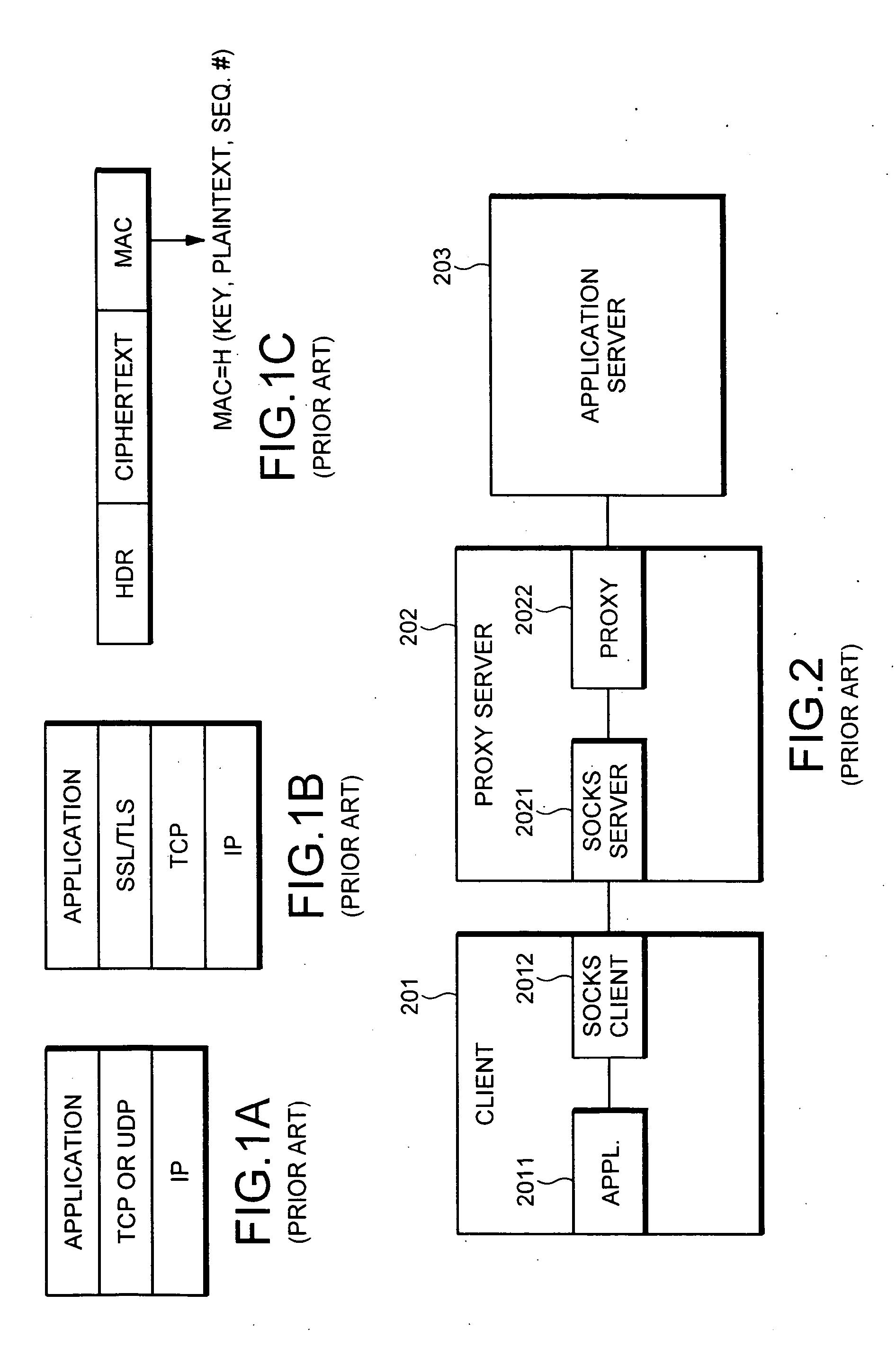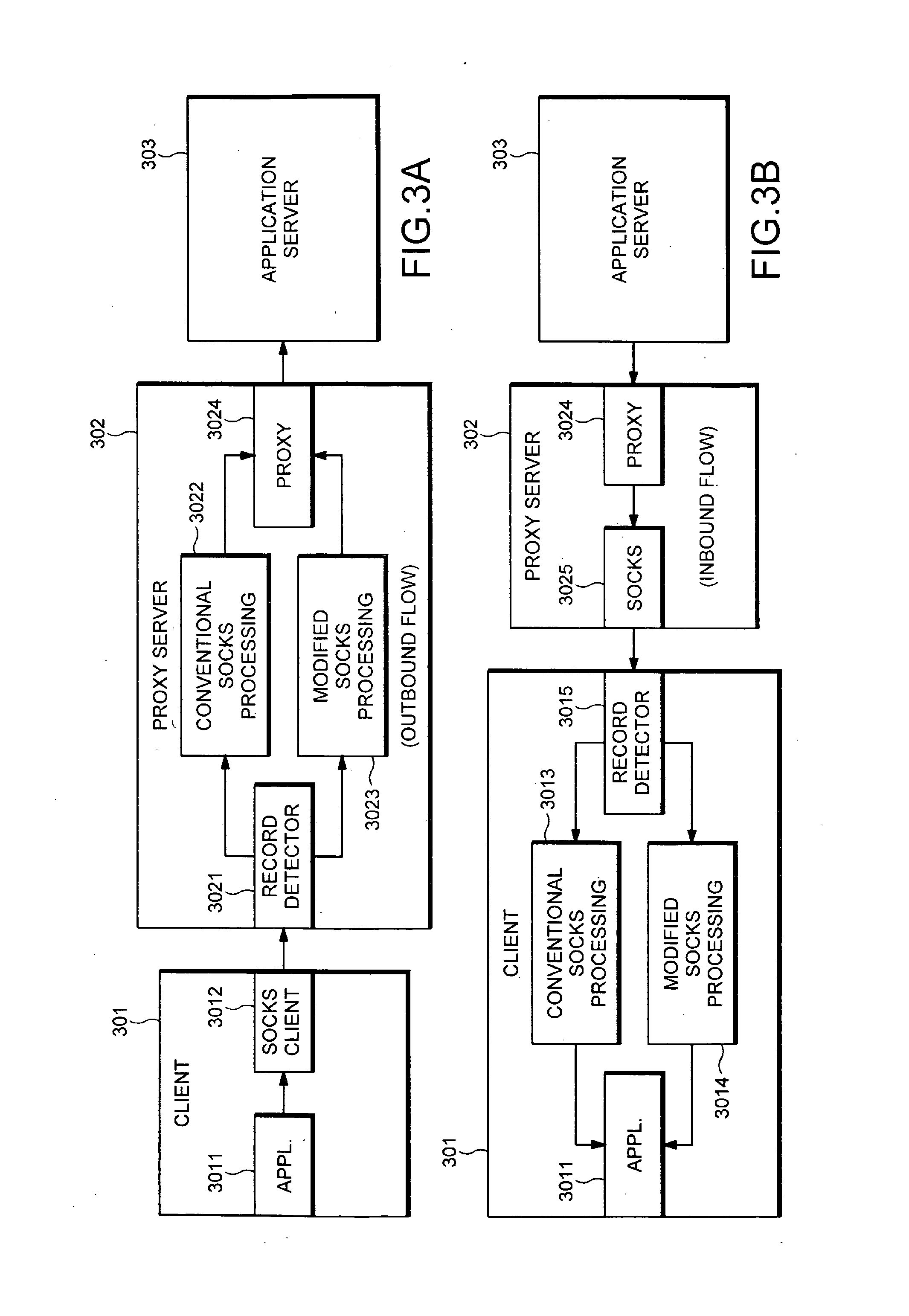Method and apparatus for providing secure streaming data transmission facilities using unreliable protocols
a data transmission and unreliable technology, applied in the field of data transmission schemes and protocols, can solve problems such as delays and other side effects when transmitting a stream of data, received packets may appear “jerky”, and tcp is not a good candidate for streaming data, such as videoconferencing applications
- Summary
- Abstract
- Description
- Claims
- Application Information
AI Technical Summary
Benefits of technology
Problems solved by technology
Method used
Image
Examples
Embodiment Construction
[0053]FIG. 3A shows a system employing a modified SOCKS protocol in an outbound (e.g., from client to application server) direction according to one variation of the invention. As shown in FIG. 3A, a client computer 301 communicates with an application server 303 through a proxy server 302. As in the conventional system of FIG. 2, the client computer includes a client application 3011 that communicates with a SOCKS client 3012. However, in contrast to the conventional system of FIG. 2, SOCKS processing is modified to perform additional and different functions from those in the system of FIG. 2, as described in more detail below. Application server 303 operates in the same manner as that described with reference to FIG. 2.
[0054]In contrast to the system of FIG. 2, proxy server 302 includes two types of SOCKS processing: a conventional SOCKS processing function 3022, and a modified SOCKS processing function 3023. Record detector 3021 receives server-bound records from SOCKS client 301...
PUM
 Login to View More
Login to View More Abstract
Description
Claims
Application Information
 Login to View More
Login to View More - R&D
- Intellectual Property
- Life Sciences
- Materials
- Tech Scout
- Unparalleled Data Quality
- Higher Quality Content
- 60% Fewer Hallucinations
Browse by: Latest US Patents, China's latest patents, Technical Efficacy Thesaurus, Application Domain, Technology Topic, Popular Technical Reports.
© 2025 PatSnap. All rights reserved.Legal|Privacy policy|Modern Slavery Act Transparency Statement|Sitemap|About US| Contact US: help@patsnap.com



